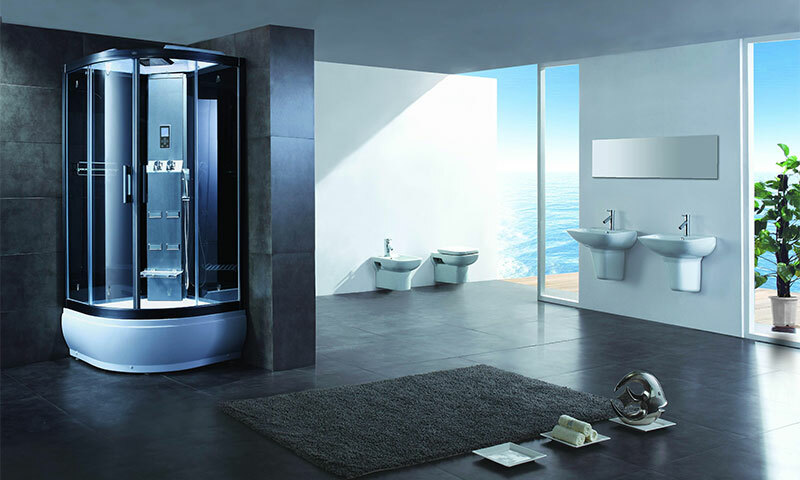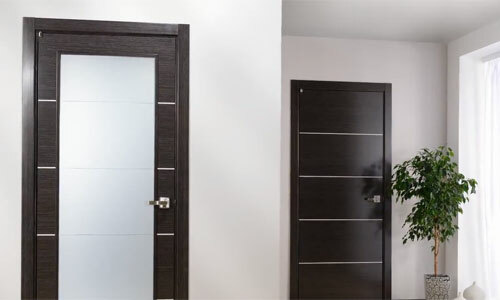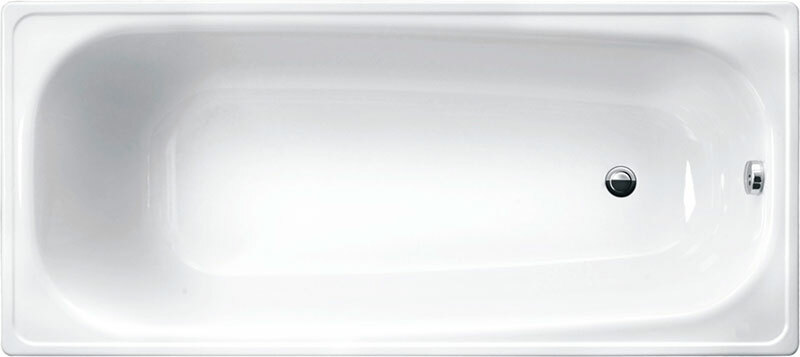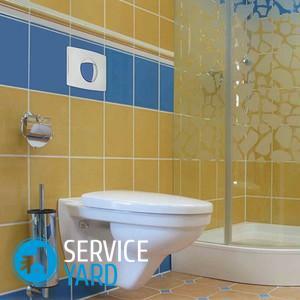
- Advantages of the built-in sanitary ware
- Wall-mounted toilet: drawbacks
- Special features of mounting
- Some more features of the wall-mounted WC:
- Built-in toilet without installation of
Until recently, people did not pay much attention to the design of the bathroom. Much more important moments were convenience, practicality and, of course, that plumbing was in good order. Over time, the requirements for the bathrooms and their design have increased. Separate plumbing items are real works of art. The way of installation of the sanitary equipment has changed. For example, such a "miracle of technology", like a built-in toilet, it's hard to surprise anyone. Many prefer this way of installing plumbing. Let's consider more in detail what is a built-in toilet with installation, its pros and cons.
to the contents ↑Advantages of the built-in sanitary ware
Before you choose a particular option for installing plumbing, carefully study the advantages and disadvantages of each. So, the positive features of embedded plumbing items are as follows:
- Ideal for fans of Minimalism style.
- Simplified maintenance of plumbing, as there will be no hard-to-reach places. Neither the classical installation of sanitary ware, nor the hanging toilet bowls have such an advantage.
- Possibility of arrangement of a warm floor in a bathroom. This is especially true for combined bathrooms, where the bathroom requires a heated floor.
- Possibility of tiling the floor without damaging the picture.
- Aesthetics. All communications are hidden behind the wall. This approach, moreover, provides additional sound insulation.
Important! As for access to communications in case of repair, it is of no particular complexity. Access to the necessary nodes is carried out using special hatches.
Maybe this is not quite a complete list of benefits, but they are enough to stop people's attention on this method of installing the toilet.
to the contents ↑Wall-mounted toilet: shortcomings
Speaking of the advantages, it should be mentioned that the built-in toilet with installation has also the negative side:
- The installation is not very complicated, but the money costs are much higher than for the usual fastening of the toiletfloor.
- The installation of the toilet is not only the purchase of the plumbing itself, but also the purchase of a far from inexpensive installation system.
- The method may be unacceptable for an old house with worn out pipes.
Important! Old pipes can simply not withstand the load. All this is fraught with additional repairs, which, they say, will fly into a pretty penny.
to the contents ↑Installation features
Installation allows you to install plumbing at any point of the bathroom. Of course, it is necessary to take into account the location of the toilet bowl relative to the sewage system.
Important! If you are lucky with a specialist, this problem will be solved without much difficulty.
Fixing methods
The toilet built into the wall is installed with two installation options:
- Standard. Used a metal frame and mounts with supports. There are also installations that allow solving the issue with the angular placement of sanitary ware.
- Rail installation of a built-in toilet allows you to combine several items of sanitary ware( urinal, washbasin, bidet) into one construction.
The tank of the built-in toilet bowl, as a rule, resembles a canister in shape. The most common material of manufacture - strong plastic. An additional thermo-shell prevents condensation.
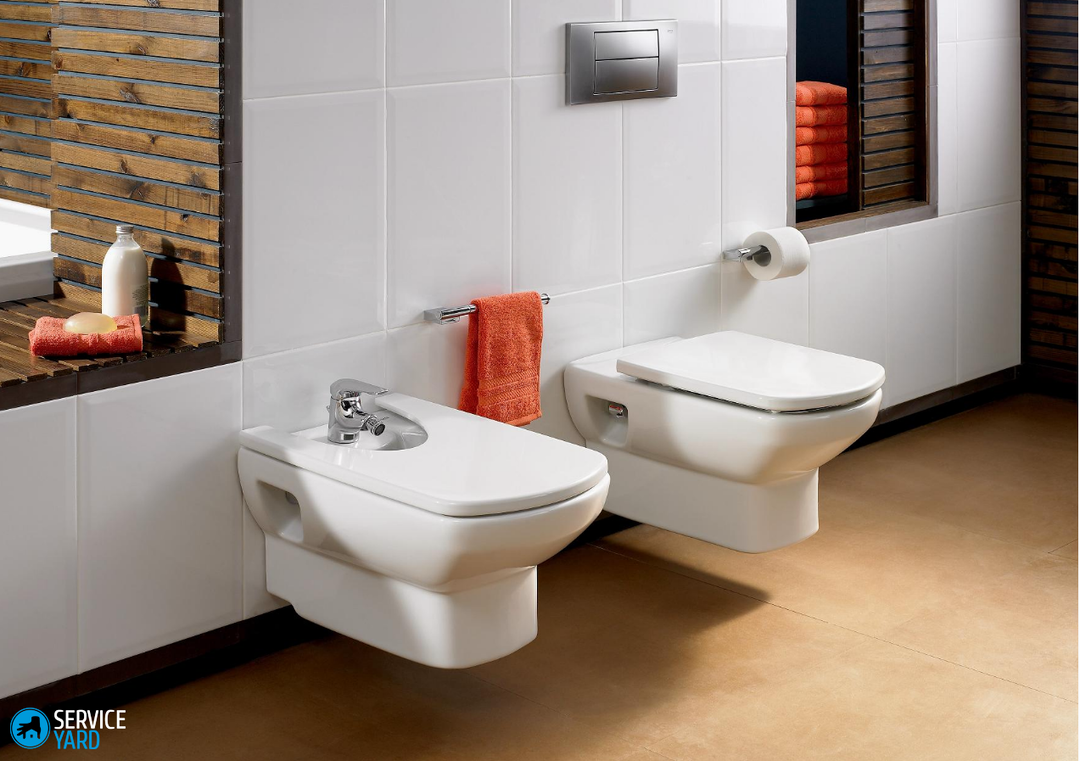 As a matter of fact, the button for water release remains visible.
As a matter of fact, the button for water release remains visible.
Important! Many fear that with breakage access to the "insides" of the system will be difficult. However, the execution of work under all rules will allow you not to be afraid of breakdowns.
Algorithm works:
- The first stage checks the reliability and strength of the floor, walls, pipes, communications. If the sewer is worn out, it is first put in order. If the communications are in perfect condition, you can not be afraid that you have to disassemble the built-in structure for repair.
- Installation of the installation, fixing it on the floor, mounting studs for installing the toilet.
- Masking of installation with plasterboard and other sheathing materials. The advantage of gypsum board is that it is perfectly attached to the facing tile, which is most often used for finishing bathrooms.
- Installation of plumbing fixtures for studs.
- Insulation of studs with washers with soundproof effect.
- Decorating the structure with ceramic tiles and other decorative materials.
A few more features of the wall-mounted toilet:
- The tanks used for the integrated toilet bowls are characterized by economical water consumption. If a 9-liter water is used for a single flush in an ordinary tank, then for a built-in structure this figure is half that. The efficiency of flushing does not suffer at all. If there is a water meter in the house or apartment, then the savings are obvious.
- Manufacturers of sanitary ware for embedding take into account the fact that access to communications will be limited. Therefore, all products are of high quality and, as practice shows, trouble-free operation.
Important! According to official research, built-in toilets with installation - the most reliable and durable. Even if individual elements of the system fail, they can be easily replaced, using special hatches.
to the contents ↑Built-in toilet without installation
This is a more economical option. In this case, the plumbing is fixed to the wall, and the drainage clutch together with the tank are hidden in the concrete base. The concrete base, in addition, supports the toilet bowl from below.
Important! For strength and reliability, this option is not inferior to the installation with installation, but much cheaper.
To equip the toilet, you will need:
- 2 pins 90-80 mm long with a diameter of 20 mm.
- 4 washers and nuts for 20 mm.
- Concrete mix - 40-50 liters.
- Decking.
Tools:
- Drill.
- Construction level.
- Capacity for concrete.
- Roulette.
The algorithm for installing a toilet, built into the wall, is as follows:
- Sewage preparation. Mounting the coupling for draining. If there is a need, you can shorten it, or, conversely, increase it.
- Marking of holes on the wall from the calculation of the height of the toilet over the floor of 400-450 mm.
- Drilling through the wall. Mounting and fastening with stud nuts.
- Installation of formwork from the central panel with holes and two side ones. The control of the correct installation of the formwork is carried out using the building level.
- Pouring concrete. This leaves a groove for the tank. The concrete mixture consists of cement, sand, gravel and water, with a ratio of 1: 2: 3: 0.7.The duration of hardening of concrete is 7 days.
- Disposing of the toilet bowl for draining, sealing with silicone sealant.
- Installation of a toilet bowl, connection of a tank.
Installation of built-in sanitary ware should be entrusted to professionals. However, if you have the skills and knowledge in the field of construction, you can perform these works yourself. We hope that the information in this article, which clarifies all the features of the built-in toilet bowls with the installation, helped you to understand all the nuances of sanitary ware and make the right decision.

